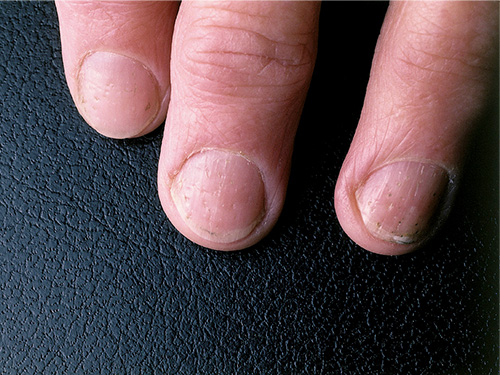Nails
Psoriasis of the nail plate may present as pitting, onycholysis or subungual hyperkeratosis. For a photo of psoriasis of the nails, see here. It can closely mimic tinea of the nails—exclude tinea by performing fungal culture or histology before starting psoriasis therapy. Fungal infections rarely occur in fingernails without toenail disease.

Reproduced with permission from the A-Z of Skin [digital]. Australasian College of Dermatologists. Sydney. https://www.dermcoll.edu.au/
Topical therapy for psoriasis of the nails is difficult and often unsuccessful. Improvement is most likely when the patient is being treated with a systemic drug for significant psoriasis elsewhere on the body.
For a motivated patient, try:
calcipotriol+betamethasone dipropionate 50+500 micrograms/g ointment topically, in proximal nail fold and under nail, once daily at night for up to 3 months. calcipotriol + betamethasone dipropionate calcipotriol+betamethasone dipropionate calcipotriol+betamethasone dipropionate
For psoriasis presenting as onycholysis or subungual hyperkeratosis, an alternative is to use a potent topical corticosteroid lotion. Use:
mometasone furoate 0.01% lotion topically, once daily under nail for up to 3 months. mometasone furoate mometasone furoate mometasone furoate
If treatment is unsuccessful, refer for dermatologist advice.
For practical information on using topical corticosteroids and calcipotriol in psoriasis, see Topical drug treatment for psoriasis in primary care.
